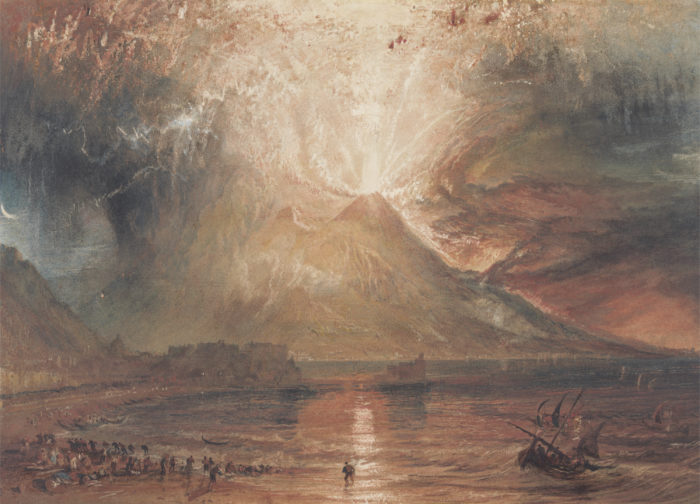About
Funded through an AHRC Leadership Fellowship awarded to Dr David Higgins, this project is the first major investigation of environmental catastrophe in Romantic-period writing.
As distinct from terms like 'disaster', catastrophe - from the Greek meaning an overturning, a sudden turn, a conclusion - indicates a major shift in the state of things that may well be destructive, but is not necessarily so. The environmental catastrophes addressed by this project include the heat death of the universe in Lord Byron's 'Darkness', the destruction of humanity 'by deluge' in Book Five of William Wordsworth's The Prelude, the geological separation of the British Isles from mainland Europe in Charlotte Smith's 'Beachy Head', and the joyous apocalypse at the end of Percy Bysshe Shelley's Prometheus Unbound.
Until recently, approaches to Romanticism have often focused on how it addresses the rejuvenating power of localised nature, rather than examining its concern with larger-scale and potentially disruptive natural phenomena. And yet Romantic writing was shaped by trends and discourses that made catastrophe a powerful trope, including 1) short-term climate change, notably in the aftermath of the Laki (1783) and Tambora (1815) volcanic eruptions; (2) the Christian inheritance of apocalyptic narratives; (3) transformative changes in geology and meteorology; (4) socio-political upheavals in the era of Revolutionary and Napoleonic France; (5) cyclical models of history that presented cultural collapse as an inevitable consequence of imperialism; (6) widespread assumptions about the influence of climate on culture.
This project challenges the critical tendency to understand Romantic and post-Romantic nature writing as largely apolitical and concerned with individual and local experience. It is particularly concerned with how catastrophe was experienced and represented by communities, and how it put pressure on ideas of community. It also builds on recent work in the field of 'new materialism' by addressing how Romantic writers understood the agency of elemental forces. The project aims to make an innovative contribution not only to literary scholarship on the period, transforming our understanding of Romantic ecologies and their legacy, but also to the cultural history of climate change, and the field of disaster studies. It will speak to contemporary concerns about the unpredictable effects of anthropogenic global warming, and is timed to coincide with bicentenary of the period from 1815-1818, during which the world experienced substantial climate change following the eruption of the Indonesian volcano Mount Tambora.

Joseph Mallord William Turner, 1775–1851, British, Vesuvius in Eruption, between 1817 and 1820, Watercolor, gum and scraping out on medium, slightly textured, cream wove paper, mounted on thick, smooth, cream wove paper, Yale Center for British Art, Paul Mellon Collection
Within the central investigation of how Romantic-period writers represented environmental catastrophe, the project has four key research questions:
(1) How did these writers understand the connection between political and environmental catastrophe in a global context?
(2) How did catastrophe provoke Romantic writers to imagine new forms of community?
(3) How is catastrophe registered in textual ambivalence and formal innovation?
(4) What roles have Romantic-period representations of catastrophe played in the genealogy of present-day environmental writing?
Aims and Results
The project's findings are disseminated through a number of publications and events including:
· A conference on ‘Mediating Climate Change’, held at the University of Leeds, 4-6 July 2017
· Public engagement: exhibition displays and a community outreach programme organised in collaboration with The Wordsworth Trust, and poetry workshops and a competition organised in collaboration with The Poetry Society
· Books, journal articles, online publications, and conference papers; these will be listed on the Publications page
· The Romantic Climates blog, featuring guest posts from internationally-recognised scholars as well as early career researchers working in the area of Romantic ecology
People
Dr David Higgins, Principal Investigator
Dr Tess Somervell, Research Assistant
Project Partners
Follow us on Twitter @BRWEC and Facebook www.facebook.com/BRWEC
For any enquiries, email Tess
